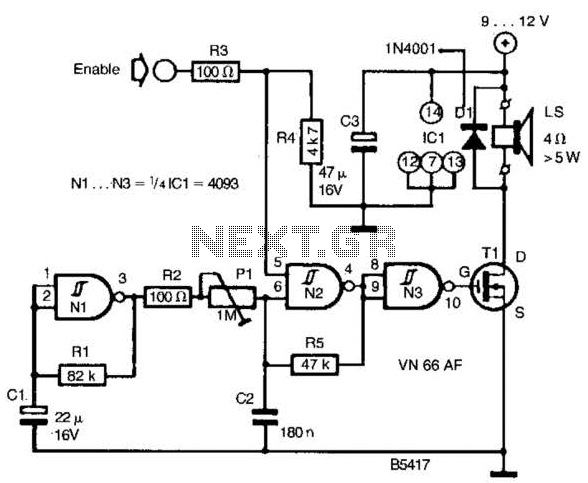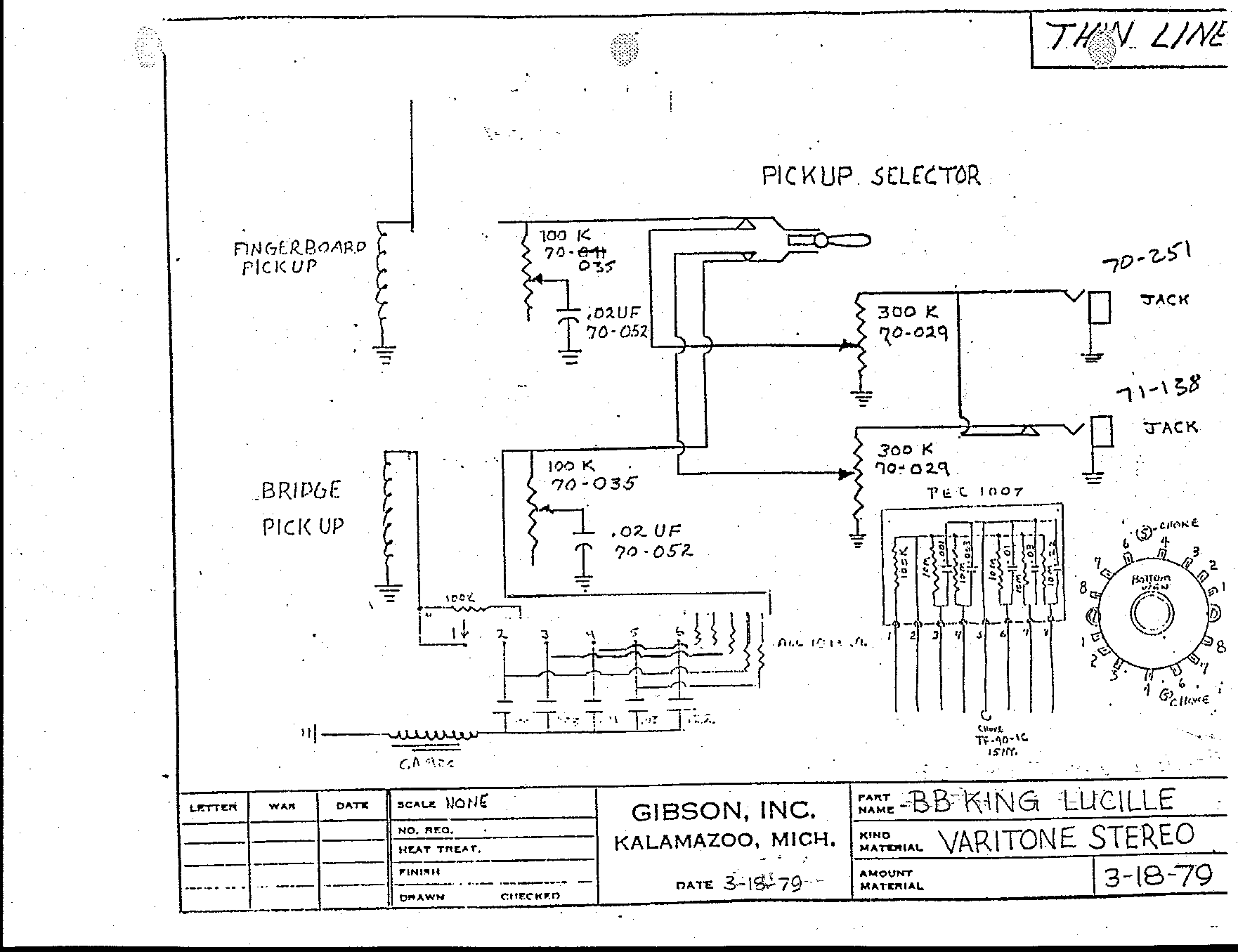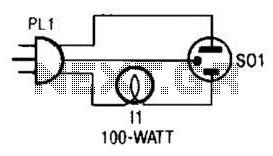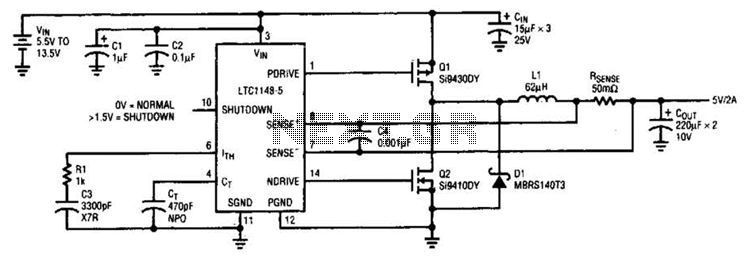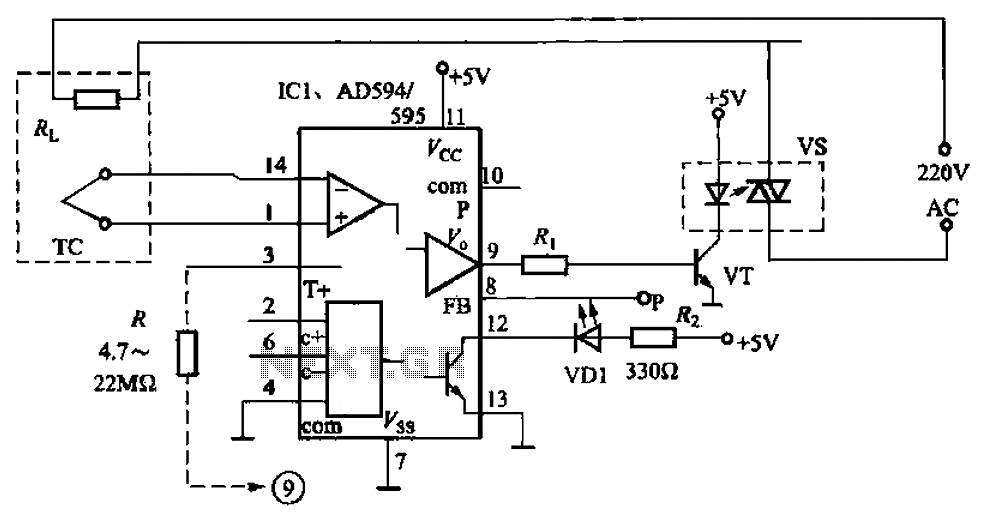
Single-phase motor automatic intermittent operation control circuit
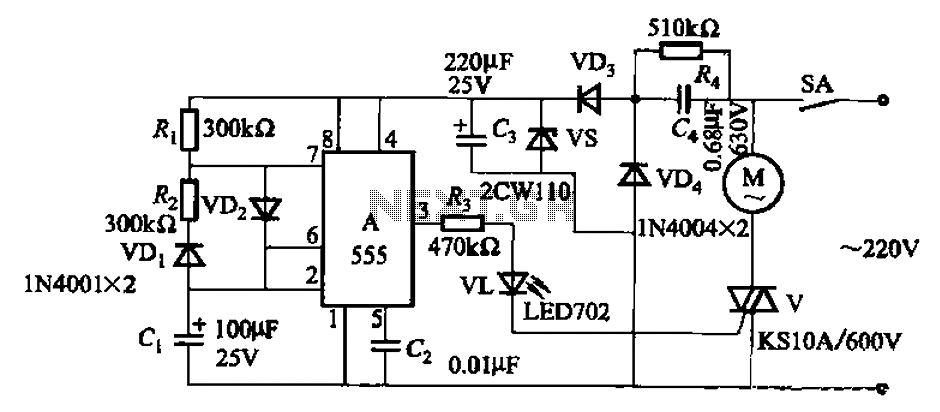
The circuit depicted in Figure 3-16 utilizes a 555 IC (Integrated Circuit) as the control element. It features a capacitive step-down circuit and incorporates a bidirectional thyristor (V) for intermittent motor control operation. By adjusting the resistance values of Ri and R2 or the capacitance value of C1, the motor's running and stopping times can be modified. When the parameters are set, the motor operates for 50 seconds followed by a downtime of 15 seconds.
The circuit operates using the 555 timer in an astable mode, providing a square wave output that controls the bidirectional thyristor. The thyristor acts as a switch that allows current to flow to the motor during the 'on' phase of the 555 timer output. The use of a capacitive step-down circuit ensures that the voltage supplied to the motor is reduced, protecting it from overvoltage conditions and allowing for controlled operation.
The timing of the motor's operation is determined by the values of the resistors Ri and R2, as well as the capacitor C1. The relationship between these components can be described by the timing equation for the 555 timer, which dictates the duration of the high and low states in the output signal. By modifying these values, the user can achieve the desired operational characteristics of the motor, such as varying the running time or the downtime.
In practical applications, this circuit can be employed in various motor control scenarios, such as in automated systems where motors need to operate intermittently. The precise control over the motor's running and stopping times allows for efficient energy use and can enhance the overall performance of the system. The bidirectional thyristor adds versatility, enabling the circuit to control motors that may require reverse operation, depending on the application needs. Circuit shown in Figure 3-16. It uses 555 IC A as the control element; capacitive step-down circuit; bidirectional thyristor V between the motor control intermittent operation. Adjusting the resistance Ri, R2 or capacitance value Cl allows you to change the motor running and stop time. Press the icon parameters, the running time is 50s, downtime 15s.
The circuit operates using the 555 timer in an astable mode, providing a square wave output that controls the bidirectional thyristor. The thyristor acts as a switch that allows current to flow to the motor during the 'on' phase of the 555 timer output. The use of a capacitive step-down circuit ensures that the voltage supplied to the motor is reduced, protecting it from overvoltage conditions and allowing for controlled operation.
The timing of the motor's operation is determined by the values of the resistors Ri and R2, as well as the capacitor C1. The relationship between these components can be described by the timing equation for the 555 timer, which dictates the duration of the high and low states in the output signal. By modifying these values, the user can achieve the desired operational characteristics of the motor, such as varying the running time or the downtime.
In practical applications, this circuit can be employed in various motor control scenarios, such as in automated systems where motors need to operate intermittently. The precise control over the motor's running and stopping times allows for efficient energy use and can enhance the overall performance of the system. The bidirectional thyristor adds versatility, enabling the circuit to control motors that may require reverse operation, depending on the application needs. Circuit shown in Figure 3-16. It uses 555 IC A as the control element; capacitive step-down circuit; bidirectional thyristor V between the motor control intermittent operation. Adjusting the resistance Ri, R2 or capacitance value Cl allows you to change the motor running and stop time. Press the icon parameters, the running time is 50s, downtime 15s.

